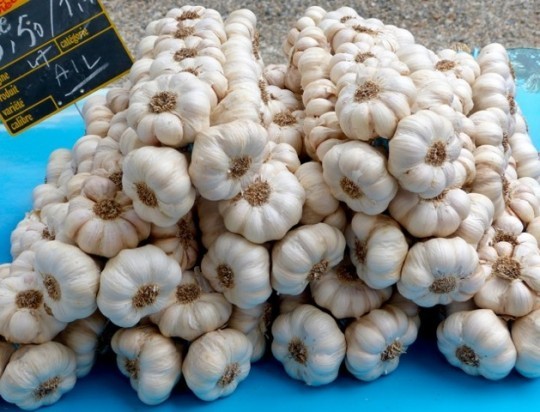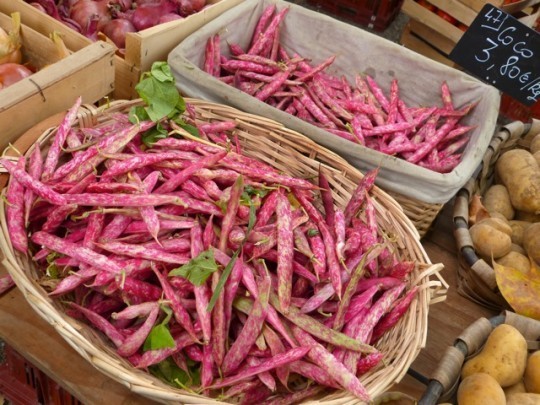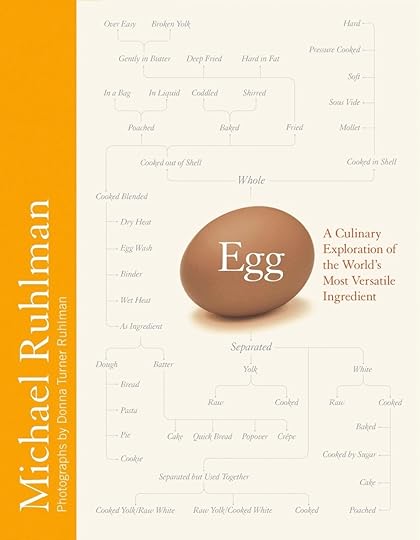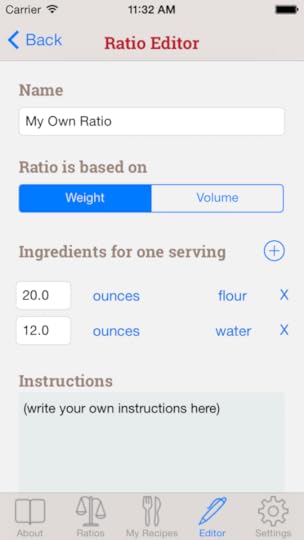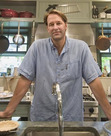Michael Ruhlman's Blog, page 30
February 18, 2014
Vegetable Porn

Baby turnips, greens and all, sautéed in butter.
All veggies from The Chef’s Garden. All pix by Donna Turner Ruhlman.
I have never seen Donna so unhinged by vegetables, behind the camera or eating them. She moaned when she tasted. I’d done almost nothing to the baby turnips. I’d sautéed them in a little butter. That was it. Salt. Done.
She said, “Oh my God, if you had a restaurant that served just this with a small medallion of meat, it would kill.”

Baby root vegetables and peas.
It once again showed the truth of what Thomas Keller once said to me: “If you have better product than I do, you can be a better chef than me.”
This began last week when Donna and I had to shoot really beautiful radishes and peas. But it’s February. In Cleveland. Not likely to happen. Unless I cast a glance about 50 miles west to the rural town of Huron, OH, home of The Chef’s Garden and Veggie U. I sent an emergency dispatch to Lee Jones, Chef’s Garden emissary in red bow tie and overalls. He wrote back, “You’re in luck!”
And so yesterday arrived not just the lovely French breakfast radishes, but also the most beautiful baby turnips I’ve ever seen, and the most powerfully sweet baby carrots I’ve ever tasted. And mesclun greens, they way they’re supposed to be, not the slimy stuff in plastic clamshell.
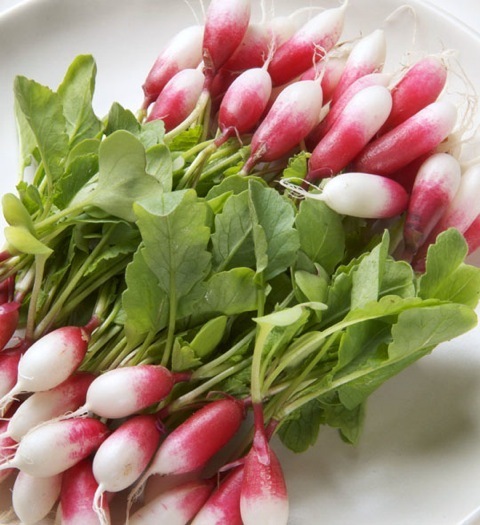
Baby breakfast radishes (the bouquet I should have gotten for Donna on Valentine’s Day).
I couldn’t stop eating them, and Donna couldn’t tear herself away from them. “It’s been a long time since I’ve been so excited about vegetables,” she said.
You can see why.
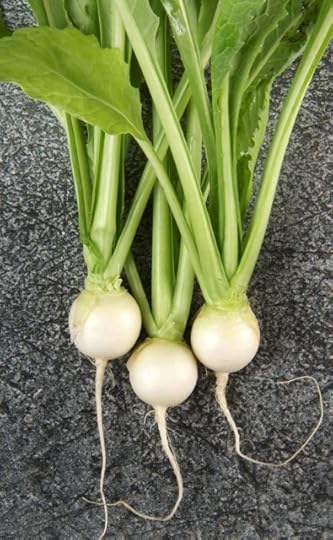
Baby turnips.
As with so many great purveyors, the Jones family never set out to be who they are now. They started as a commercial farm, but when a hailstorm wiped them out, Bob Sr. and his two sons had to say, “The farm is gone—who are we now? Sell the farm or start fresh?” When a Cleveland cook and food writer, Iris Bailin, asked Lee Jones for squash blossoms, little-known luxuries at the time, they sensed a market in the chef world and decided to grow specifically for chefs. Once people like Keller, Alain Ducasse, and their most vocal advocate, the late Charlie Trotter, began to praise their work, off they took.
And I’ve just learned they’re helping to raise money for Team USA’s bid for a medal in the Bocuse d’Or by hosting a dinner, March 15th, prepared by some of the country’s leading chefs, including Eli Kaimeh of per se in NYC, Curtis Duffy of Grace in Chicago, and our own Jonathon Sawyer. (Call 419-499-7500 for info or reservations.)
Thank you, Chef’s Garden!
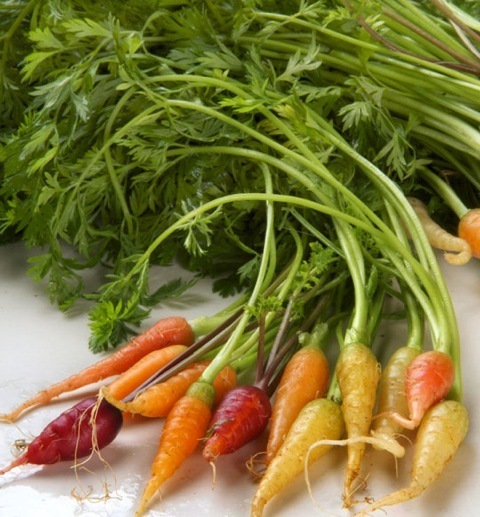
Baby carrots, from Chef’s Garden,
Other links you may like:
My past posts on Farmer’s Market Q & A and Farm Transparency v. Farm Secrecy
Amanda Hesser’s article on the Chef’s Garden.
Follow Chef’s Garden on Twitter and Facebook.
Check out Forrest Pritchard‘s memoir Gaining Ground.
© 2014 Michael Ruhlman. Photo © 2014 Donna Turner Ruhlman. All rights reserved.
February 14, 2014
Friday Cocktail Hour: Operation Neptune
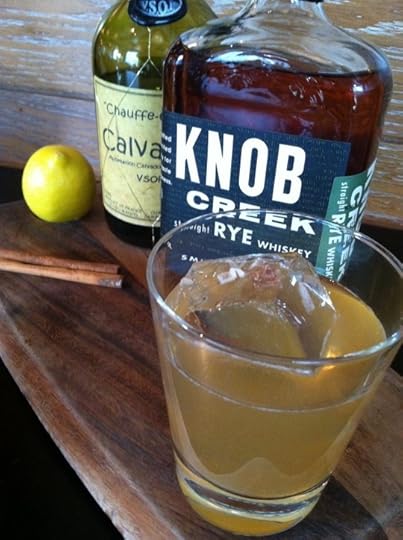
Operation Neptune
Every now and then a request to guest post comes in and while I don’t always accept them, the following cocktail from Jamie MacBain, head bartender at Bourbon Steak DC, so intrigued me I decided it merited a post for The Hour. This cocktail is tart, spicy, savory—perfect for a winter evening. I’ve add some of my own notes after the recipe. I especially liked Jamie’s thought process in the naming of this new cocktail.—M.R.
by Jamie MacBain
I’m a bit of a Calvados connoisseur and I wanted to incorporate it into a cocktail for the fall and winter seasons. We tried this new Calvados Chauffe Coeur VSOP that had lots of baked apple and caramel notes to it. Often Calvados doesn’t have enough apple or baked apple pie components, but this one had such distinctive flavors I wanted to make a drink that wasn’t over-the-top sweet but showcased that strong apple component. So I started playing with rye, another favorite of mine, to pair with the Calvados and I realized I needed a higher proof to make the cocktail work. 100 proof or more really cuts through the sweetness and elevates the baking spice inherent in Calvados.
To further accentuate those flavors I decided to use cinnamon syrup, since cinnamon and apples are a natural pairing. I added lemon juice for balance. And to give the drink a slightly savory quality, I added smoked sea salt. I’d been hoping to create a cocktail that incorporates salt, not just as a garnish but as an ingredient, and this drink had the perfect components for it.
Being a history major and researching names for this cocktail—which uses rye, the quintessential American spirit, and Calvados, a spirit from Normandy—I naturally thought of the Normandy D-Day invasion, which was codenamed Operation Neptune. With the incorporation of smoke through the smoked salt, the cocktail, for me, conjures images of that fateful day of June 6, 1944. As a final touch I add a large hand-hewn ice cube to mimic the cliffs the troops had to scale.
In case you can’t find Knob Creek rye, you can always use Rittenhouse rye or Wild Turkey 101. Really any rye that’s 100 proof or above will work for this drink. For the Calvados, instead of Chauffe Coeur VSOP, you can use Christian Drouin Calvados or any apple brandy with good apple flavor notes, like Clear Creek 8-year Apple Brandy. Just don’t use Applejack.
Operation Neptune
1 oz. Knob Creek rye
1 o.z Chauffe Coeur VSOP Calvados
¾ oz. freshly squeezed lemon juice
¾ oz. cinnamon syrup (recipe follows)
2 pinches smoked sea salt
Combine the rye, Calvados, lemon juice, syrup, and 1 pinch of salt in a Boston shaker. Add ice. Shake vigorously and strain into an Old Fashioned glass with large ice cubes.
Garnish with the remaining 1 pinch of smoked salt along the top of the ice.
Cinnamon Syrup
1000 grams of water
25 grams cinnamon stick
5 grams black peppercorns
Boil all of the ingredients together until reduced by one-third. Measure the liquid and add an equal amount of granulated sugar. Stir to dissolve. Cool before use.
This syrup will keep for up to 2 weeks in the refrigerator.
Cinnamon syrup is commonly used in a lot of tiki drinks like the classic Donga punch. At the restaurant we use cinnamon syrup in one of our nonalcoholic cocktails, where we add it to a mix of grapefruit juice and lemon juice and top it off with sparkling water. The syrup can also be drizzled on desserts like bread pudding or mixed with honey to add a pleasant spice to baklava.
Ruhlman’s Notes: While Jamie has created the optimal cocktail with his choice of French apple brandy, I had none on hand. American applejack had to do. The Rye I had was Templeton (80 proof). Even with these compromises, the cocktail was superb. The syrup is gentle and elegant, but you might want to halve or even quarter the syrup amount, unless you want a liter of it. Also, I highly recommend toasting and lightly crushing the peppercorns before the infusion.
Happy Friday, all and thank you Jamie MacBain.
Other links you may like:
A few past cocktail posts featuring whiskey: Meyer Lemon Fig, Whiskey Sour, and the Old Fashioned.
Past guest cocktails: For Whom the Sun Rises, the Ludwig, Old Infatuation, The Man Harrison, and the Cobbler.
Learn more about Calvados in Eric Asimov’s NYTimes column on the subject.
© 2014 Michael Ruhlman. Photo © 2014 Donna Turner Ruhlman. All rights reserved.
February 12, 2014
Dreaming of Gascony
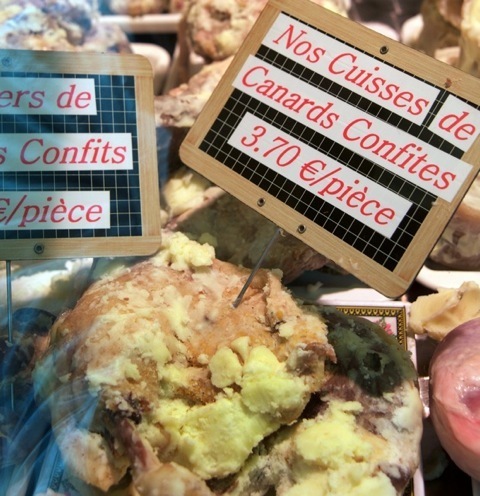
Duck confit for sale at a market in Gascony/Photos by Donna Turner Ruhlman
It’s been twenty-five years since I remember a Cleveland winter with such deep cold for so long as this. So, when Donna, going through some old files, sent me some photos from our summer travel in Gascony for this Conde Nast Traveler story, I longed for summer in a completely new way. Not for summer to arrive but for me to arrive in summer, a summer evening in Gascony. And I just wanted to share some pix here with enduring thanks to our guide and Gascon muse, Kate of Camont.
Donna, always into rustic and textured surfaces (she made our 2014 calendar with pictures of doors from this same trip to Italy and France, serious door porn on our fridge for the remainder of the year), shot this board hanging on a wall outside Kate’s ancient farmhouse. She also collects them for surfaces for food photography, one of the most important elements of a food shot.
One can never, never have enough garlic.
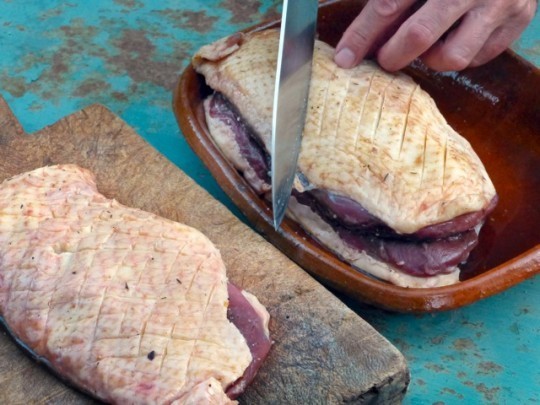
Scoring duck for grill.
We grilled these fatties on one of our first nights in town.

Wheat!
One of the farmers we met grows 250 types of wheat, spreading seeds to other farmers to ensure a genuine diversity in a world dominated by monocultures. He mills his wheat and sells the bread he makes from it.

Baguette on restaurant hat rack in Larvadac.
This image says, more than anything, You are now in France.
Something, anything, bring me back….
February 11, 2014
Egg Pre-Order Available Now
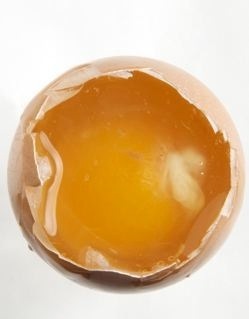
Photo by Donna
Little, Brown, my esteemed publisher, has set up a page for pre-ordering my new book, Egg: A Culinary Exploration of the World’s Most Versatile Ingredient.
As a bonus for pre-ordering, they’re offering a free signed flowchart, which is a visual display of the entire book on a four-and-a-half-foot piece of paper (the cover gives you something of an idea of the chart, though only an idea). Donna wrote out the original flowchart by hand, five feet of parchment paper, which served as the book proposal.
We’re all excited about this new book, which is officially published first thing in April.
February 7, 2014
Friday Cocktail Hour: The Greyhound

The classic Greyhound. Photo by Donna Turner Ruhlman.
I’m continuing the citrus binge as it’s a remedy for the winter blasts we’ve been getting. My favorite vodka mixer had long been grapefruit juice—because I’m a fan of bitter. Bitter is good. But then those tangerines floated into the house and I have to say, The Robertson is one bright cocktail.
But back the basics now, on this busy, busy week, struggling with two manuscripts, a trip to DC to talk Schmaltz, Boston on Sunday, and a manuscript to finish. Something simple and refreshing to end the week.
Please, now is the time, fresh grapefruit juice only. That’s what makes the drink. Squeeze it by hand if you don’t have a juicer or a reamer. It’s all about the freshness of the juice.
Happy Friday, all.
The Greyhound
2 ounces vodka
3 to 4 ounces freshly squeezed grapefruit juice
Wedge of lime
Combine the fluids over ice in a highball glass, add a wedge of lime. It’s winter. Embrace it.
Other links you may like:
My past cocktail posts with vodka: the Madras, Sea Breeze, Cosmo, Lemon Drop, and Moscow Mule.
Learn about the different types of grapefruit.
Jazz up the classic Greyhound with St. Germain.
© 2014 Michael Ruhlman. Photo © 2014 Donna Turner Ruhlman. All rights reserved.
February 3, 2014
Pancakes!
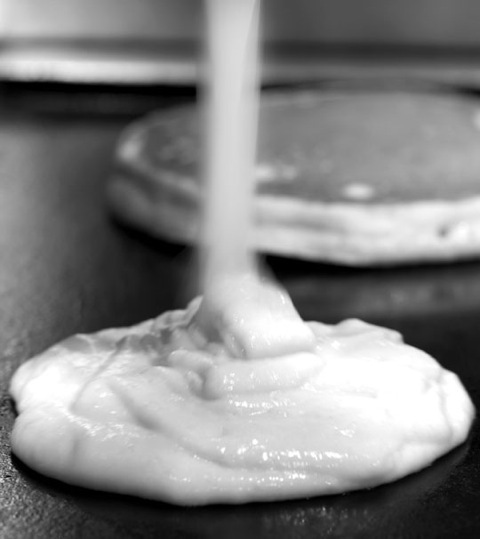
Pancakes! Photo by Donna Turner Ruhlman.
I love pancakes on winter mornings. And I find something terribly satisfying about pancakes with an over-easy egg and bacon—the savory bacon and the sweet pancake and syrup expertly mediated by the versatile egg. I got to thinking about them recently after a commenter on a recent post announcing the Ratio 2.0 release wrote that for five bucks he’d do the math himself. It kind of annoyed me, but I couldn’t figure out why until I thought about pancakes.
I always remember that I prefer a 5% brine, so that however much water I use, I can multiply that by .05 to determine the salt quantity. But ratios aren’t simply math, they’re about the proportions of several ingredients. No matter how many times I make pancakes, I always check the ratio. Moreover, they scale to what you have or need. Say you have only one egg. Say you wake up to find 13 of the guests who came to your Super Bowl party last night are asleep in your living room and will need to be fed. What to do?!
Ratios are the key. And what’s best is that if you know the ratio, you know infinite variations. You can make these pancakes savory or sweet or put them to different uses. This all-purpose batter will make great fritters if you use it simply as a binder, for example.
The following ratio and recipe is from my book Ratio: The Simple Codes Behind the Craft of Everyday Cooking.
Pancakes
2 parts liquid : 1 part egg : 1/2 part butter : 2 parts flour
What I like about a pancake ratio is that you can tailor the amount according to how many people you want to feed, even if you just want to feed yourself. Also, you can vary it to your own taste, adding more or less liquid for thinner or thicker pancakes. Buttermilk or homemade yogurt can be measured as half the liquid for a more complex flavor. You can also replace 25 percent of the flour with cornmeal, whole-wheat flour, or other ground cereals or grains for differing flavors and textures. These are standard pancakes, flavored with a little sugar and vanilla. I like to cook them on a film of bacon fat, which gives them a crisp crust.
Wet Ingredients
8 ounces milk
2 large eggs
2 ounces butter (1/2 stick), melted
1 teaspoon pure vanilla extract
Dry Ingredients
8 ounces flour (1 1/3 to 1 1/2 cups)
2 tablespoons sugar
2 teaspoons baking powder
1 teaspoon salt
Combine the wet ingredients in a bowl and whisk until they are thoroughly mixed.
Combined the dry ingredients (press the baking powder through a strainer if it’s pebbly).
Combine the wet and dry ingredients and whisk or stir just until the batter is smooth (don’t over mix or the pancakes can be tough). This ratio results in a fairly thick batter, and thick, cakey pancakes. If you like them thinner, add 1 or 2 ounces of milk.
Cook on a lightly oiled griddle or pan over medium heat until done.
Yield: About eight 4-inch pancakes
Other links you may like:
My past posts on making mayo and the key to making flaky biscuits.
Here are 10 different fillings for your pancakes.
Want to learn more about this breakfast treat? Check out the history of the pancake.
Personality type can be determined by how you eat an egg.
© 2014 Michael Ruhlman. Photo © 2014 Donna Turner Ruhlman. All rights reserved.
January 31, 2014
Friday Cocktail Hour: The Robertson

The Robertson: tangerine juice and vodka. Photo by Donna Turner Ruhlman.
It’s winter, which means citrus season approaches, one of the few bright spots in the otherwise endless gray of a Cleveland winter. Donna brought home some oranges with beautiful deep, deep orange-colored flesh. I’d needed them for a duck recipe I was developing. I asked her to get more next time, planning a Screwdriver post and a celebration of citrus. She returned with thick-skinned, stupid old navels, probably from last year. “Sorry,” she said. “That was all they had.” But she did pick up some tangerines because she thought they looked cool.
Aha! I’d made a vodka–tangerine juice before and loved it. A helpful check on Twitter found no proper name for this very sunny elixir. It is sunny—sunny in the mouth. It made Donna smile and say, “Mmmmm! It feels healthy!”
So, to brighten this wintry Friday, may I introduce The Robertson, equal parts vodka and tangerine juice, garnished with a wedge of lime. Feel free to increase the juice as desired but not too much. My tangerines each gave me 1/2 cup, just. The juice is intensely flavored and sweet, and is nicely balanced with the neutral spirit and the bite of the lime.
When I asked on Twitter, several people suggested calling it a Phillips Head. Good, but a little cute. And another suggestion, Socket Wrench, was too heavy-handed. (No one made any Greyhound—vodka with grapefruit—or Cape Codder—vodka with cranberry—associations.) But a different juice demands a different name. And as it is so close to a screwdriver, I’ll keep that association, without being overly obvious, by suggesting it be named after P. L. Robertson, the Canadian who invented and patented the screwdriver with a square tip. The name also keeps the pretty, fruit-juice cocktail somewhat manly sounding. It’s really hard for a dude to sidle up to a bar and say, “I’ll have a Pink Lady.” Even though that’s a great drink. So The Robertson it is.
Happy Friday to all!
The Robertson
2 ounces vodka
2 ounces tangerine juice
Wedge of lime
Combine fluids in a double old fashioned. Add ice and a squeeze of lime.
Other links you may like:
My past cocktail posts with vodka: the Madras, Sea Breeze, Cosmo, Lemon Drop, and Moscow Mule.
The Hour: A Cocktail Manifesto, by Bernard DeVoto, is a lovely meditation on that heavenly time of day.
Check out the Evans & Peel Detective Agency, independent cocktail bar and restaurant in West London.
© 2014 Michael Ruhlman. Photo © 2014 Donna Turner Ruhlman. All rights reserved.
January 29, 2014
Mad! (With Beet-Cured Rockfish on Fig Rye)
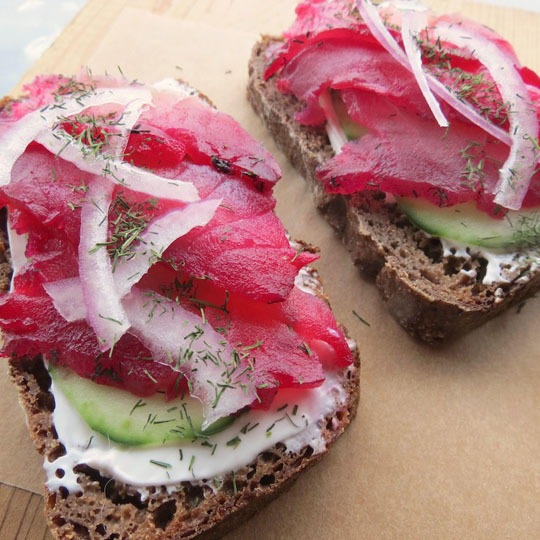
Fig Rye and Beet-Cured Rockfish. Photo by Carri Thurman.
Carri Thurman, baker and chef at Two Sisters Bakery in Homer, Alaska, on a young and growing cooks’ community. Her guest post speaks for itself (great links, too). —M.R.
by Carri Thurman
This summer I went completely and utterly MAD, and it couldn’t have been more rewarding or delicious.
Mad is the Danish word for food. It is also the name of what has become one of the most exciting food conferences happening in the world today. This year’s talks were curated by David Chang and the folks at Lucky Peach magazine with the guidance of MAD founder, the head chef of Noma, Rene Redzepi. It is not so much a technical conference but a gathering of ideas and a convergence of philosophies with presentations that began with impassioned Italian butcher Dario Cecchini gutting a pig and quoting Dante and ended with Alex Atala showing us all that in cooking, as in life, death does indeed happen.
The women of Souk el Tayeb and Danny Bowien and the chefs of Mission Chinese fed us lunch each day at the conference, Mikkeller Beer kept us hydrated and happy with their special brews for the occasion (the weed beer was a “high” light!), and the coffees expertly curated by Tim Wendelboe were all memorable and amazing. As was the after party, a sit-down dinner for six hundred people under a bridge where I found myself nudged between fermentation god Sandor Katz and the soul of the South, Michael Twitty. The night ended dancing with Margot Henderson—that is, until the Danish police broke up the party.
But the best part of the whole experience was eating all around Copenhagen. We booked reservations at many of the Noma alumni restaurants, such as Relae and Bror and, most memorable of all, Amass. We ate cod head and kohlrabi, lamb brains and eyeballs, and the most amazing foie “snow.” There was the incredible Chateaubriand covered in shaved truffles at Marchal and everywhere there were seasonal desserts of berries and verbena. But the thing that stuck with me the most was the uber-hearty brown bread we tried one day at a sidewalk cafe; nubby and slightly sour, it was the perfect accompaniment for the traditional toppings of cultured cream and cured fish. The depth of flavor and variety of possibilities made it the one dish that translated the most perfect sense of place, right there by the water, the rigging on the boats ringing like a dinner bell as they bobbed up and down in the canal. It was the thing I most wanted to bring home and that felt most like home to me. So here is my tribute to all things delicious in Copenhagen, in honor of the summer I went Mad (and it was the best thing I could have ever done!).
Beet and Sugar–Cured Rockfish on Fig and Oat Rye Bread with Caraway Sour Cream
2 cups sugar
1 cup kosher salt
1.5 pounds rockfish, filleted with no skin
1 cup shredded beets (from about 1 tennis ball-sized beet)
To cure the rockfish:
Combine the sugar and salt to make the gravlax cure.
Sprinkle liberally over the rockfish fillets and lay them on a layer of plastic wrap.
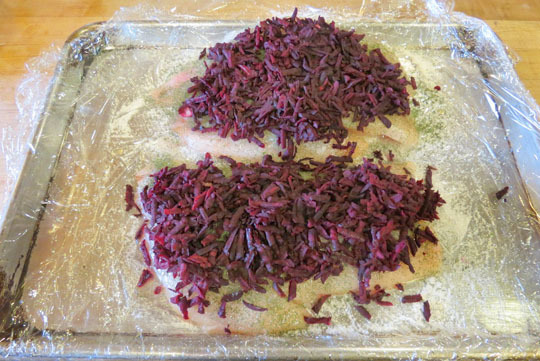
Scatter the grated raw beets over the fish. At this point you could also lay fresh dill down.
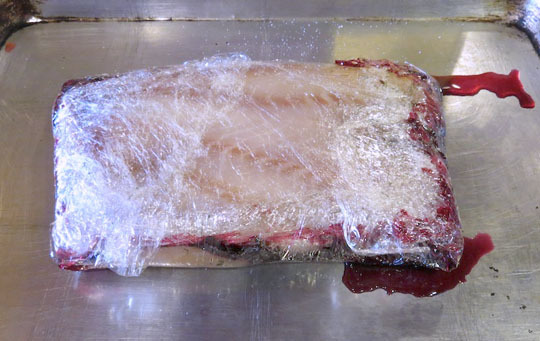
Put the two pieces beet sides together and wrap very tightly in plastic wrap.
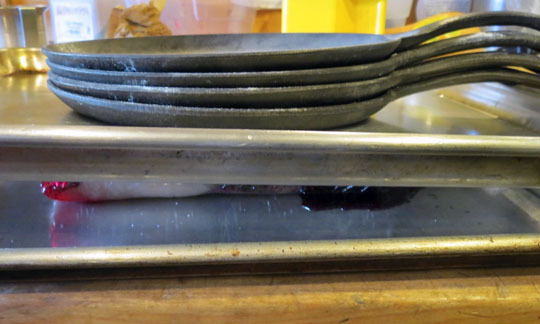
Weigh the whole thing down and refrigerate for 48 hours, turning every 12 hours or so to distribute the fluids.
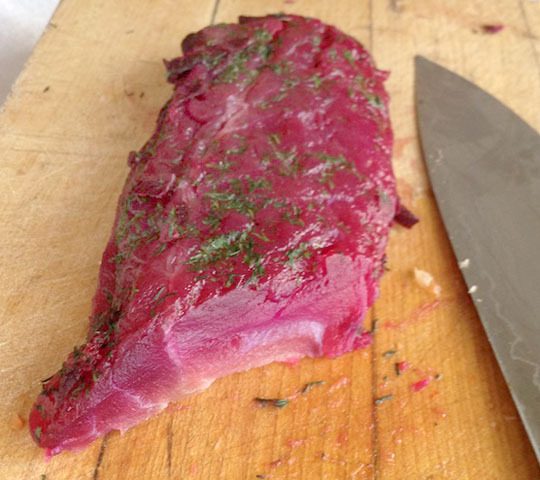
Remove the beets, rinse the fish, pat dry, and slice thin. Serve as you desire!
To store, keep wrapped tightly in the fridge for 1 week or in the freezer for 2 months.
Caraway Cream Schmear
Stir 1 tablespoon toasted caraway seeds into 1 cup sour cream and refrigerate for at least 1 hour or overnight.
Press through a sieve to remove the seeds.
For a lighter cured version, serve as an appetizer with pickled onion and cucumber.
Fig Rye with Oats
This is a very dense and moist bread, perfect for toasting and slathering and topping with yummy things. (This process uses a sponge that is left to rise overnight, and while it may seem complicated, it’s more wait time than anything else. It’s a good recipe to do on a snowy day at home in between naps)
10 ounces active
Dark Rye Flour (total 26 ounces)
8 ounces dried mission figs
1 cup thick cut oats
1/4 cup dutch process cocoa powder
Kosher salt
Warm Water total 26 ounces
To Begin measure out:
10 ounces sourdough
10 ounces water
10 ounces rye flour (2 1/4 cups)
Mix together in a medium bowl (it will be a stiff dough). Cover and let sit at room temperature for 8 hours. This is your rye starter. To this you will add the rest of the ingredients.
After 8 hours:
When almost ready to mix final dough, rehydrate 8 ounces mission figs in 8 ounces of warm water and soak 1 cup thick cut oats in 8 ounces of warm water let both sit for 30 minutes.
Puree the figs with their water in a food processor adding 1/4 cup of dutch processed cocoa powder, blend until you have a lump free paste.
Pour 16 ounces of warm water over starter, add the figs and the oats and stir together well. mix in 16 ounces of rye flour and 1 tablespoon kosher salt. Stir together to form a rough ball in the center of the bowl.
Cover and let sit 2 hours.
The dough will have risen to about double in size. If not, it’s ok to let it go a little longer. Just remember this is a very dense bread with not a ton of rise.
Pour out onto a well floured surface and using a knife or bench scraper, divide the dough into 3 equal parts.
Grease 3 loaf pans and carefully pick up each section of dough and tuck it into a pan. No need to knead, there is really no gluten to develop and you’ll just have a sticky mess on your hands. (Think of it as a wet scone batter rather than bread dough and you will be better off)
Cover with plastic wrap and let rise another 45 minutes to an hour.
Bake in a preheated 325 degree F./163 degree C. oven for about an hour. You are looking for an internal temp of 200 degree F./93 degree C. Pull from the oven and let cool completely before pulling from the pan. Wrap well and store at room temperature for about a week or lasts 3 months in the freezer.
Yields three 1-pound loaves.
Other links you may like:
My past post on Rockfish Ceviche.
Carri’s past posts include Magic of Making Salt and The Humanizing Impact of Soup.
Try making the Citrus-Cured Salmon from Twenty.
Roasted beet soup, an easy soup to make at home.
© 2014 Michael Ruhlman. Photo © 2014 Donna Turner Ruhlman. All rights reserved.
January 27, 2014
Ratio 2.0 for iOS7

New design, new features for the Ratio app, a recipe calculator, for iOS7.
The new version of our Ratio app is now available, with a thrilling new feature. You can create your own custom ratios. For instance, while the 5-to-3 flour-to-water ratio, or 60% water, is the standard baker’s percentage for bread, many prefer a wetter dough, as high as 86% for the no-knead doughs. Now you can create and save your own ratios. You can devise your own specific recipes and save them to your recipe library. And of course the app still functions as an all-purpose recipe calculator for 32 fundamental preparations. Simply type in the amount of one ingredient and the app automatically tabulates the amounts of all the ingredients.
Scale recipes up or down as needed. Want pancakes but have only one egg? Type that in to tabulate the correct amount of flour and milk. Want to triple the amount of dough for pizzas? It’s a tap of a button. Have an irregular amount of ground meat and want to tabulate the right amount of salt? Type in the weight of the meat and the amount of salt for perfectly seasoned sausage appears. Want to reduce the amount of your favorite turkey brine for a small chicken? Type in the amount of water you want to use, and Ratio calculates the brine strength. I’ve added a couple new ratios (for an all-yolk pasta, for instance). And Donna’s lovely black and white photographs at last get a proper display.
Cooking is not about following recipes (though recipes are important). Cooking is really about proportions of one ingredient relative to others and how those proportions work. A ratio is a starting point, the basis for infinite variations and preparations, whether for cakes, doughs, sauces, brines, stocks, thickeners, or custards. I wrote a book devoted to the idea, called Ratio. When Will Turnage, VP of Technology and Invention at R/GA, emailed me to ask if we might collaborate on an app based on the book, I was thrilled—a perfect union of cooking and our new technology. The new design is by David and Joleen Hughes, of Level, based in Calistoga, California. That’s the new logo they’ve created for this site, the R with the quill and the knife, which will launch soon. If you already own the app, simply update it. Let me know if you have any problems. If you don’t own it, we’re keeping the $4.99 price the same for at least the next few months while Will works on the final innovation to follow his make-your-own-ratio functionality.
Will’s and my biggest hopes are that this app encourages more people to cook and will make cooking for everyone easier and more fun. Happy cooking, all!

The new layout features photos and still divides the ratios by category.

All ratios come with basic preparation instructions.
The coolest part of the Ratio 2.0 app is the ability to create your own ratios and recipes.
Related links:
Will and I also created the Bread Baking Basics app for the iPad, which calculates recipes for all kinds of bread.
I introduced last year the iPad app Schmaltz: Love Song to a Forgotten Fat; it was published in hardcover by Little, Brown in August and, by agreement with the publisher, is now back in the iTunes store as an app. There’s a video of how the app works in this post.
Again, this all began with the book Ratio: The Simple Codes Behind the Craft of Everyday Cooking.
© 2014 Michael Ruhlman. Photo © 2014 Donna Turner Ruhlman. All rights reserved.
January 24, 2014
Friday Cocktail Hour: Rum on the Rocks

An ode to sailors and their affection for rum. Photo by my iPhone.
As Key West race week winds down, and the pork is slow cooking in the oven for my favorite East Carolina barbecue as the centerpiece for the last of our nine nights here, I’m suggesting a good sipping rum in honor of the sailors I cook for, rum being the ubiquitous choice amongst the crew.
And also because we, or I anyway, rarely think of drinking a good rum with ice. Jeff Hasse, above, a carpenter and project manager not far from me in Ohio, who crewed on the lovely little J70, insisted I try his favorite rum, Pyrat. He’s something of a pirate spirit, always good company, and I agreed and found it to be a great pleasure. This rum has more complexity and depth than I rarely think of rum having. Rum is easily varied with mixers—with tonic, with Coke, with ginger beer—but this one sipped is deeply caramel-tasting with lighter vanilla notes.
I was sent a bottle of Brugal 1888, an aged rum with equal and different complexities and spice notes.
So today, in honor of sailors, and with a busy cooking afternoon to get to, I suggest a good rum cocktail.
The problem here of course is the just-one part.
Why do I believe them, after dinner with the kitchen magically cleaned? “Come on, Michael. Duval Street. Just one.”
Race results just in! Huge congratulations to the J111 Spaceman Spiff!!! They won it! Going be a happy night!
Rum on the Rocks
2 ounces Pyrat, Brugal 1888, or other good rum
Ice
Combine in a lowball. If you’re able, enjoy balmy breezes. If you’re in the frigid Midwest, it warms the insides just as well.
Other links you may like:
My past posts that include rum: Dark and Stormy, Man About Town, and Sour Cherry Daiquiri.
Try making your own rum at home.
Portside Distillery in Cleveland makes various types of rums, and Cleveland Whiskey makes bourbon; small spirit companies are booming throughout the country.
© 2014 Michael Ruhlman. Photo © 2014 Donna Turner Ruhlman. All rights reserved.
Michael Ruhlman's Blog
- Michael Ruhlman's profile
- 354 followers




